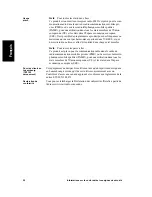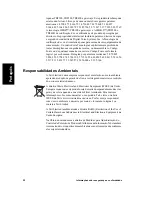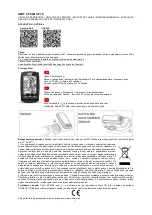
Safety and Compliance Information
9
English
tling or carrying out any maintenance. Refer to the service manual
for the correct servicing procedures.
AC Module On/Off
Switch
This switch turns the AC input to the PMU on and off. Note that this switch
breaks only the phase circuit, not the neutral.
DC Module On/Off
Switch
This switch turns the DC output from the PMU on and off. It is recessed to
prevent the DC module being accidentally switched off, thus disabling the
battery back-up supply.
Note that this switch does not disconnect power from the DC converter
itself. It disables the converter by switching off its control circuitry. Even
when the DC converter is off, the DC input is still connected to its power
circuitry.
Replacing Modules
Caution
The 100 W PA and PMU weigh between 9.3 lb (4.2 kg) and
15.4 lb (7 kg) each. Take care when handling these modules to avoid per-
sonal injury.
Device and Network Security
If this radio network equipment is used for mission-critical applications, it
is important to be able to ensure security and continuity of operation. For
IP-network-connected equipment, it is also important to ensure that this
equipment is not a means of compromising other equipment in the network.
All network elements should be physically secured, where possible. This
includes the use of locked cabinets and locked rooms. Seals on connectors
can also provide a visual indication of unauthorized tampering.
Tait recommends that all network and audio connectors should be sealed
with the stick-on type of seal. The seal should reveal if any of the
connectors have been unplugged, or if any unauthorized equipment has
been plugged in.
The seals should be difficult to remove without breaking, and should bridge
between the cable and equipment side (plug and socket) of the connection.
Seals should cover any unused network or audio sockets. This includes the
Ethernet connector on any adaptor front panels, any spare switch ports, and
the console port on the router and switch.
The seals should be difficult to reproduce. A sticker initialed or signed by
the technician should satisfy this.
Seals must be replaced if they need to be disturbed during maintenance.










































